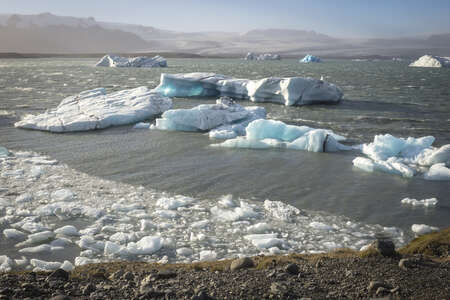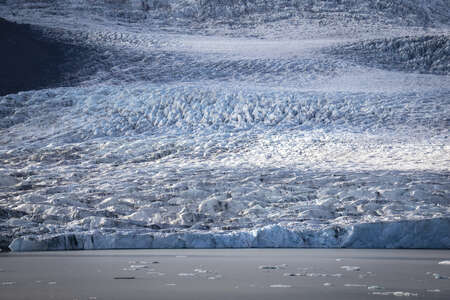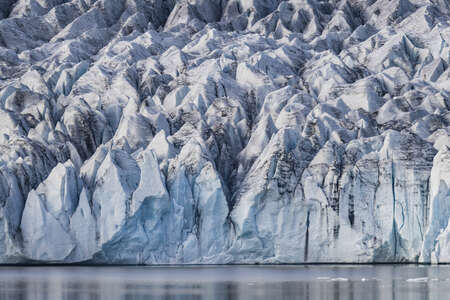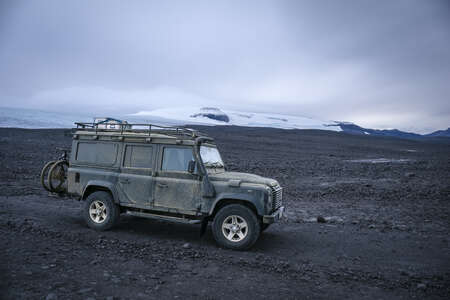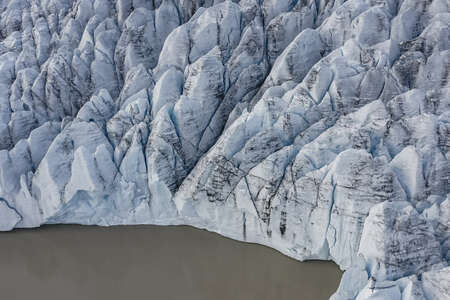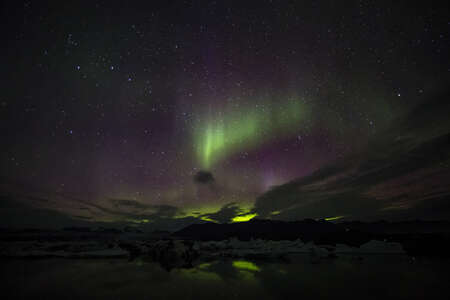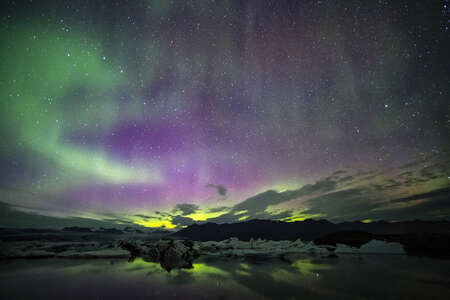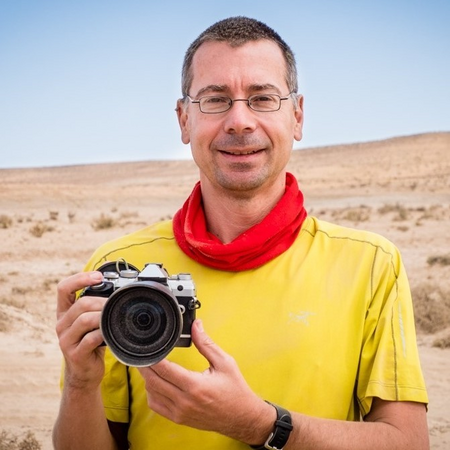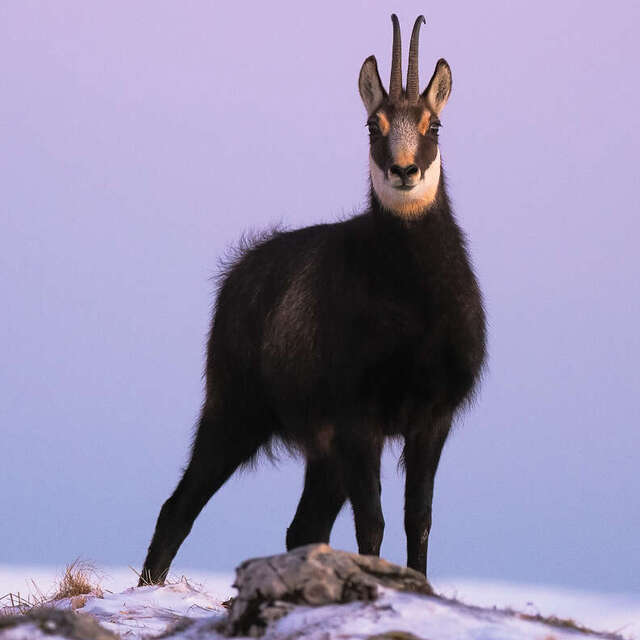"Not again!" my friend Christophe moans, rolling his eyes. He is sitting at the breakfast table with a large helping of pancakes swimming in sweet syrup, while I am checking today's forecast for the third time. "How many weather apps have you actually got?" he asks me, obviously puzzled.
"Oh, a total of six apps for the weather, three apps for the aurora forecast, plus the general Iceland app," I answer with a grin as I pour myself a fourth cup of coffee. “It looks likely that the northern lights will be really bright tonight, and I would love to photograph them over the ice lagoon Jökulsárlón. Unfortunately, the weather forecast on all the apps is varying between crystal clear and completely cloudy skies from 22:00 onwards."
"Well, at least I can finish my pancakes in peace," Christophe says happily, while I look at the detailed forecast of the moving clouds again.
After breakfast, we take our time packing our gear before heading out towards the Jökulsárlón Lagoon. We deliberately leave early so that we have plenty of time to scout for locations, and to explore alternative spots.
My plan is to photograph the auroras dancing over an ice-filled lagoon without other distracting lights, from houses or cars for example. Unfortunately, this very quickly turns out to be impossible as there is only one place where there is a large accumulation of photogenic ice blocks; and, annoyingly, it is right next to the main car park. This is not a problem for single shots, but longer time-lapse sequences will be difficult or impossible due to car headlights and visitors’ torches.
So, we change location again, and look around the Fjallsárlón Glacier, one of my personal favorite spots in Iceland. There is also an ice lagoon here, but with even fewer ice blocks. We are also much closer to the glacier here, so there would be much less sky in my photos. I decide to go and take a look at Plan C: we drive to Svinafellsjökul, but by far the most beautiful and best location for the aurora borealis remains Jökulsárlón.
Of course, I continue to check the weather forecast regularly during our search, and although there are only a few hours left until evening, the various apps are still giving different information. However, the trend clearly suggests that we should expect hardly any clouds until midnight at Jökulsárlón – so we drive the 60 kilometres back to the glacier lagoon and take our time to determine the very best location with a view north over the floating ice blocks.
Then begins what often takes the most time in photography: waiting for the right light, which in our case meant waiting for the northern lights. As it has become unpleasantly chilly, we retreat temporarily to our off-road vehicle and take a look through our box of provisions. Unfortunately, we can't find a suitable gas cartridge for our cooker, so we have to settle for biscuits, chocolate, gummy bears and some crispbread with cheese for dinner. It could be worse, especially as we have a direct view of the famous Diamond Beach from our car.
We know the times of blue hour and astronomical darkness, but as it turns out, we miss the beginning of the show. Our plan was to be at our location ready and waiting, but since there is not even a faint green glow in the sky, we give ourselves a few more minutes in the warm car. More out of boredom than anything else, Christophe holds his mobile phone up to the north and snaps a photo – but when we take a closer look it clearly shows a large green arc in the sky!
We frantically jump out of the car and cover the two hundred meters to our photo spot almost in a sprint. I quickly set up my first tripod, screw on my camera with the 7-14mm PRO lens and focus manually with the magnifying glass. I take a test picture, check it on the monitor, adjust the focus a little more, test it again and then release the shutter for my first picture of the aurora. I set the aperture to F2.8, 20s exposure time at ISO 3200. Fortunately, I am using the OM-1, which in my opinion represents a significant leap forward compared to the E-M1 Mark III: with the E-M1 Mark III, I usually stopped at ISO 1600 at night.
I check the image again on the monitor and am satisfied that my chosen settings are suitable. The photo shows a clear green curtain against a purple sky. This spectacle is reflected fantastically in the lagoon, and the ice blocks also show a clear purple shimmer. This is exactly how I imagined it and I could actually have packed up now, satisfied with my night's work. That’s not what I do, though: instead, I select the integrated timelapse function and then let the camera go to work, safe in the knowledge that I’ve already got the photo I was hoping for.
The auroras don't move very quickly in the sky, but they are not completely static either, so you can capture the movements better with a shorter exposure time in a time-lapse film. Unfortunately, though, my fears about the car park come true: despite the rather late hour, one car after another, almost one every minute, arrives and does a quick tour of the car park. Each time this happens, the ice blocks floating in the lagoon are brightly illuminated. In the end, it is only possible to use a short sequence as a time-lapse.
But that doesn't diminish the beauty of the ever-changing auroral spectacle one bit. Colourful curtains alternate with wandering arcs, light sabres rise into the sky, the shades change from purple to red to green – and we can't help but be amazed.
As the weather apps predicted, more and more clouds start to roll in, and by around 23:00, almost the entire night sky is covered in grey. However, two of my weather apps promise another gap in the clouds soon, lasting a good hour. We wait anxiously, and as promised, the clouds suddenly disperse, giving us an almost unobstructed view of the starry sky with a now completely different northern lights atmosphere. Three brilliant green arcs waft over each other and pass over us. I start another time-lapse series with one camera, and take still images with the other. Even now, after midnight, there are still far too many cars turning into the car park, so I have long since given up on the idea of a dynamic time-lapse.
Sadly, the cloud cover soon becomes denser again. Finally, all of the forecasts agree: the verdict is total cloud cover with not a single gap in sight. Despite the sinking temperatures, we wait another half hour before finally giving up hope of any more time under the stars. Nevertheless, we walk back to our car with big grins on our faces. "Well, that wasn't so bad with all those apps, was it?" I say to Christophe…
Featured Products
Adrian Rohnfelder, born 1968, married with three children, is a landscape, travel and adventure photographer and author with a passion for forces of nature like volcanoes and heavy thunderstorms and for remote and extraterrestrial landscapes. His biggest dream is a travel into space. He has been traveling since his childhood and never without a camera. In 2000 Adrian began to throw himself intensively into photography. After his excursion into the experimental macro-photography and first exhibitions, in 2005 he started to concentrate on reports about his adventures and travels in faraway countries and remote areas. He visited his first active volcano in 2008. With an expedition in 2013 to a place that felt like the end of the world, the Russian peninsula Kamchatka, Adrian Rohnfelder started to publish his pictures and stories in international magazines and got awarded at renowned international competitions. In 2016 he moved to the Micro-Four-Thirds Format and became an Olympus Visionary. In the beginning of 2017 he finally turned.
Want more tips for shooting the Aurora Borealis?
Check out this in-depth article from OM SYSTEM Ambassador Eric Rock covering specific camera settings, Starry Sky AF mode, lens selection, and the some of the best geographic locations in the US and Europe to capture this celestial event.
